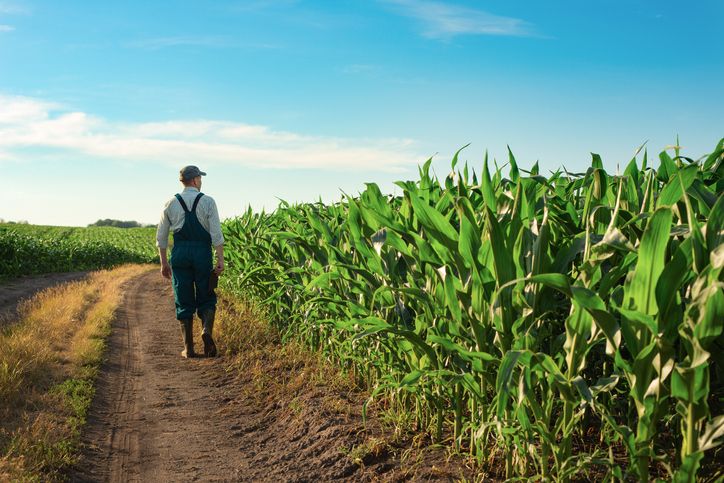- To stay on track for no more than 1.5 ̊ global warming, agriculture must slash its emissions by nearly 80%, according to a new report from McKinsey & Company.
- Farmers play a critical role in this process, but financial and other burdens stand in the way of wide-scale adoption of many of the technologies needed to decarbonize the sector.
- A number of measures for decarbonization can assist farmers and at the same time create real business value for others in the agrifood value change, including policymakers, industry players and investors.

Economic burden high, financial incentives ‘remain nascent’
Agricultural land covers roughly 38% of the world’s terrestrial area and accounts for an estimated 80% of global land-use change such as converting land for crops and feed production, according to the report.
To stay on the 1.5 ̊ trajectory, agriculture must cut overall emissions from 14.4 metric gigatons (Gt) of CO2 equivalent (CO2e) to 3.1 GtCO2e by 2050, which is nearly 80%, says McKinsey. (To give a sense of scale, 1 gigaton is roughly equivalent to 3 million Boeing 747 jets.)
Farmers are at the forefront of this potential change, but multiple barriers stand in their way when it comes to decarbonizing agriculture.
Economics is the most obvious, and also the largest hurdle for many.
In the United States, only 14.5 cents per dollar spent on food went to farmers in 2021, according to the report. This is the lowest amount paid in three decades.
Little wonder, then, that many farmers are hesitant to change their existing setup to adopt climate-forward practices, be it cover cropping, using biological inputs or participating in carbon markets. For example, just 5% of farmers surveyed by the Purdue University/CME Group Ag Economy Barometer last year said they planted cover crops to capture carbon. Others have referred to carbon markets as mere “smoke and mirrors” that are “not worth the extra cost.”
McKinsey’s report notes that 50% of farmers “cite low ROI as a top reason for not participating in carbon programs.” Agricultural carbon credits account for just over 1% of total carbon credits issued.
Meanwhile, in the biologicals realm, growers at the recent Salinas Biologicals Summit cited economics and education as key barriers to adoption.
While more financial incentives for ag and climate tech are now available (e.g., green premiums on consumer products, carbon and biodiversity markets), McKinsey’s report notes that these “remain nascent.”
Access, or lack thereof, to capital can also limit any “interventions” — that is, decarbonization solutions — that require a lot of investment or take longer to reach a financial payoff.
“If this financial burden is left to the farmer, adoption is likely to be low,” notes the report
‘Bending the curve cost through innovation’
McKinsey lays out 28 measures it says can “support on-farm decarbonization. These include, among others, biologicals, electrification of farm equipment, hydrogen power for on-farm machinery, nitrogen inhibitors and “GHG-focused breeding and genetic selection.”
Some of the top decarbonization measures include anaerobic digestors and green fertilizers, while concentrate-to-forage ratios in livestock is the most cost-effective measure, according to McKinsey’s methodology.
To achieve these things on a wide scale while also providing incentives to farmers (and, for that matter, consumers), will require enormous effort, as McKinsey suggests.
“Continued and accelerated investment will be required to bend the cost curve for existing solutions and support the development and adoption of new solutions.”
McKinsey lays out a set of “sustainable-investment themes” across the food value chain it says could “help bend the cost curve for existing solutions and support the development and adoption of new solutions.” These are divided into early- or late-stage investment themes, with some appearing in both.
Some, such as alternative protein and indoor farming, have been part of the sustainable ag conversation for a while and fall into McKinsey’s “late-stage investment” theme. Others, like digitizing commodity trading, land-based aquaculture and next-generation seeds, are in earlier investment stages. Still others — digital farm management, food waste tech — land in both.
“Although the path to achieving 1.5 ̊C will not be straightforward, it can create real business value for farmers and players throughout the value chain, with additional environmental benefits beyond reducing climate change,” the report concludes.
“And industry players, policymakers, and investors can accelerate the path to the future while enabling their own growth.”



